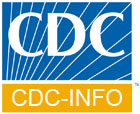Skip directly to the search box, site navigation, or content.
Division of Foodborne, Bacterial and Mycotic Diseases (DFBMD)
Shigellosis
Clinical Features
Watery or bloody diarrhea, abdominal pain, fever, and malaise.
Etiologic Agent
Four species of Shigella: sonnei, flexneri, dysenteriae, and boydii.
Incidence
Approximately 14,000 laboratory confirmed cases of shigellosis and an estimated 450,000 total cases (72% due to S. sonnei) occur in the United States each year. In the developing world, S.flexneri predominates. Epidemics of S. dysenteriae type 1 have occurred in Africa and Central America with case fatality rates of 5-15%.
Sequelae
Convulsions may occur in young children; the mechanism may be related to a rapid rate of temperature elevation or metabolic alterations. Post-infectious arthritis is a late complication of S. flexneri infection, especially in persons with the genetic marker HLA-B27. Hemolytic-uremic syndrome can occur after S. dysenteriae type 1 infection.
Transmission
A small inoculum (10 to 200 organisms) is sufficient to cause infection. As a result, spread can easily occur by the fecal-oral route and occurs in areas where hygiene is poor. Epidemics may be foodborne or waterborne. Shigella can also be transmitted by flies and sexual contact.
Risk Groups
In the United States, groups at increased risk of shigellosis include children in child-care centers and persons in custodial institutions, where personal hygiene is difficult to maintain; orthodox Jews; international travelers; men who have sex with men; and those in homes with inadequate water for handwashing.
Surveillance
Clinical laboratories report isolations of Shigella to state health departments, which then report them to CDC. Shigellosis is a notifiable infectious disease.
Trends
Decreasing incidence in cases since 1995. S. sonnei causes large periodic outbreaks.
Challenges
Increasing resistance to antimicrobial agents among isolates acquired domestically and abroad; absence of effective vaccines; modifying handwashing behavior to control prolonged community-wide outbreaks; identifying targeted prevention measures in high-risk groups.
Opportunities
Strengthening laboratory, epidemiologic, and public health capacity to detect and respond to epidemic S.dysenteriae type 1 in high-risk areas could reduce morbidity and mortality. Partnerships between CDC, local health departments and communities may lead to investigations of transmission and new prevention materials. Subtyping of S. sonnei by pulsed-field gel electrophoresis can improve outbreak detection and control.
Content Source: National Center for Zoonotic, Vector-Borne, and Enteric Diseases (ZVED)
Program Contents
Contact Information

